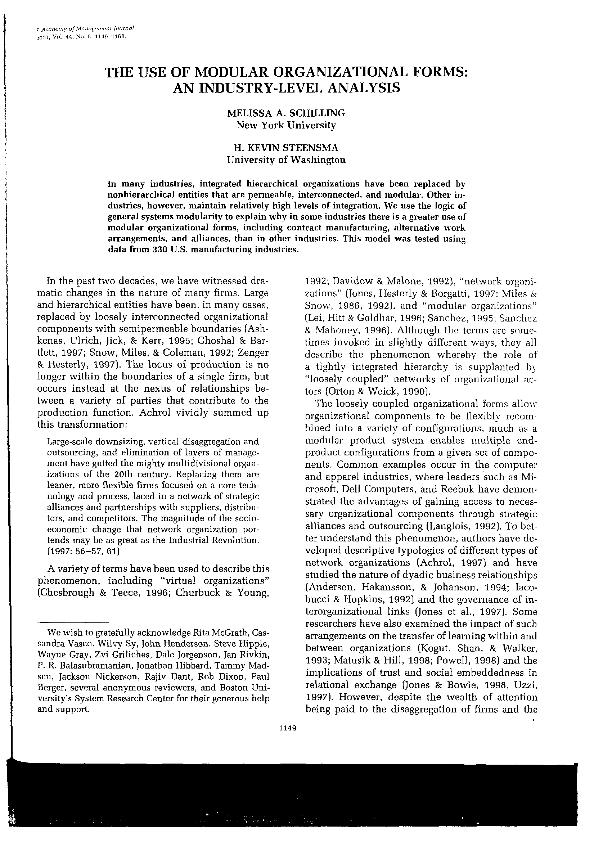The Use of modular organizational forms : an industry-level analysis

Contenido multimedia no disponible por derechos de autor o por acceso restringido. Contacte con la institución para más información.
| Tag | 1 | 2 | Value |
|---|---|---|---|
| LDR | 00000nab a2200000 i 4500 | ||
| 001 | MAP20071502510 | ||
| 003 | MAP | ||
| 005 | 20080418123343.0 | ||
| 007 | hzruuu---uuuu | ||
| 008 | 020529e20011201usa|||| | |00010|eng d | ||
| 040 | $aMAP$bspa | ||
| 084 | $a922.111.1 | ||
| 100 | 1 | $0MAPA20080293185$aSchilling, Melissa A. | |
| 245 | 1 | 4 | $aThe Use of modular organizational forms$b: an industry-level analysis$cMelissa A. Schilling and H. Kevin Steensman |
| 520 | 8 | $aIn many industries, integrated hierarchical organizations have been replaced by nonhierarchical entities that are permeable, interconnected, and modular. Other industries, however, maintain relatively high levels of integration. We use the logic of general systems modulartity to explain why in some industries there is greater use o modular organiational forms. | |
| 650 | 1 | 1 | $0MAPA20080563608$aOrganización |
| 650 | 1 | $0MAPA20080554811$aIndustrias | |
| 650 | 1 | 1 | $0MAPA20080555061$aManagement |
| 700 | 1 | $0MAPA20080255459$aSteensman, H. Kevin | |
| 740 | 0 | $aAcademy of management review | |
| 773 | 0 | $wMAP20077100482$tAcademy of management journal$d[s.l.]$gVol. 44, nº 6, December 2001 ; p. 1149-1168 |

